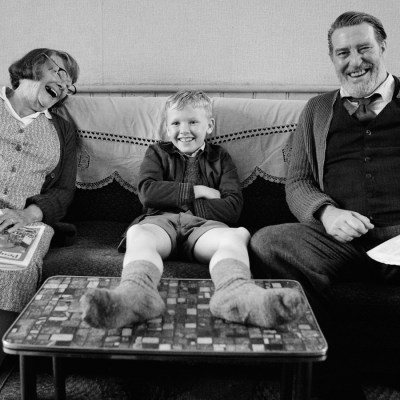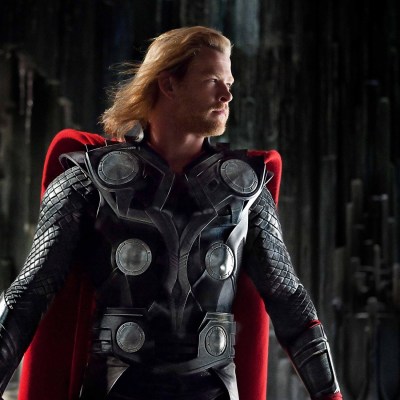Death on the Nile Review: Kenneth Branagh on Slow Boat to Murder
Kenneth Branagh’s second turn as master detective Hercule Poirot in Death on the Nile drifts off course before hitting some smooth sailing.

Count us among those surprised when director Kenneth Branagh’s adaptation of Agatha Christie’s 1934 mystery novel Murder on the Orient Express was an unexpected hit at the box office, raking in $352 million worldwide. Considering that the adaptation, like this weekend’s Death on the Nile, was a period piece based on source material probably either unknown or musty to modern audiences (as well as coming from an author now considered quite problematic in some ways), Branagh’s largely traditional take on the classic mystery (adapted previously for the big screen in 1974) managed to land with moviegoers.
That’s mainly because it was fun, with ornate sets and design, a glittering all-star cast, and Branagh–complete with an outrageous Belgian accent and an even more outlandish waxed sculpture of a mustache that arguably stole the movie–chewed into the role of Christie’s famed detective Hercule Poirot with gusto. It was a romp, and the old-timey puzzle-box nature of the whole thing made it a nice change of pace from the usual fare.
Naturally, the end of Orient Express teased a sequel based on Christie’s 1937 novel Death on the Nile, and indeed Branagh got behind the camera (and again applied the mustache, albeit a tad subdued) for a shoot that lasted from September to December 2019, and with screenwriter Michael Green once again penning the adaptation, and Branagh loading up a cast that included Gal Gadot, Annette Bening, Russell Brand, Letitia Wright, and, uh, Armie Hammer.
Following the beginning of the shoot, however, Fox (the studio behind both pictures) was sold to Disney, the pandemic exploded, and delayed everything by a year or more, and Hammer’s career imploded following allegations of emotional and sexual abuse, infidelity and other bizarre personal behavioral issues. Yet here we are, in 2022, and Death on the Nile is at last a film that exists for audiences to see. Is it as much fun as its predecessor, or has the moment for handsomely staged and stylized period mysteries passed?
The answer is yes and no. Death on the Nile (previously adapted in 1978) is not quite as enjoyable as Orient Express, primarily because the first hour of the movie takes too long to get out of the harbor and spends too much time on various non-essential activities before finally diving into the sleuthing of whodunit. The movie is almost halfway over before a murder occurs, but once that happens and the heart of the story kicks in, Death on the Nile offers up a lot of the same pleasures as Branagh’s first Poirot outing.
It’s an increasingly tiresome standard operating procedure in mainstream visual storytelling today–whether in films or streaming content–to begin with a flashback and/or origin story, and in this case we get both: Death opens with a de-aged (and unfortunately uncanny-valleyed) Poirot in the trenches during World War I, as his platoon gets ordered to make a seemingly doomed last run at the Germans beyond the wire.
But Poirot uses his previously untapped powers of deduction to determine the perfect time to make the charge, and it proves successful, at least until his commanding officer killed, his face scarred (hence the mustache), and the love of his life rushing to his bedside in spite of the unintended consequences.
“Unintended consequences” is a theme that recurs throughout Death on the Nile, as Green’s screenplay this time works a little more at digging into Poirot’s character and some of the supporting players as well. But this is not necessarily what we came for, although Branagh skillfully transitions the Poirot of the first film into a sadder, more melancholy version here.
As we flash forward to the present, the detective finds himself in Egypt, meeting up with his old friend Bouc (Tom Bateman, returning from Orient Express) and, back in London, observing from a distance (at first) a soap opera that unfolds as self-styled playboy Simon Doyle (Hammer) ditches his steamy, whirlwind romance and engagement with the smoldering Jacqueline (Emma Mackey) for an equally rapid–but much more lucrative–marriage to her wealthy former best friend Linnet (Gadot, still a non-presence when not in Amazon mode).
As an embittered Jacqueline stalks Simon and Linnet all the way to the steamship S.S. Karnak, on which the couple will be sailing down the Nile with an entourage of friends and assistants, the Doyles attempt to hire Poirot to officially dissuade Jacqueline from her plans. He refuses, and the Karnak sets sail. After what seems like a lot of interminable setup, someone is killed in their cabin, and the most obvious suspects aren’t quite so clear cut as they first seem. It’s thus up to a reluctant Poirot to determine who the killer is.
Once this portion of the movie kicks in, when there is actually a death on the Nile, and the mystery takes center stage, Death on the Nile becomes an increasingly suspenseful, fast-paced, and twisty thriller involving stolen pearls, more death–some of it quite grisly–a complicated plan, and a pistol or two. It’s quite engrossing, a credit to the structure of Christie’s plotting and the screenplay’s largely faithful rendering of it (although some characters have been changed).
Branagh is in the spotlight again, of course, and though his Poirot is more wistful this time, he’s still a joy to watch when he’s reminding people, “I am Hercule Poirot!” and sounding like he really means it. As for the ensemble of suspects, an unrecognizable Brand stands out in a surprisingly somber turn as a doctor and Linnet’s former lover, while Mackey, Wright, and Sophie Okonedo also turn in strong work. Other characters are altered seamlessly to make the cast more diverse, taking some of the sting out of knowing Christie’s outdated views on race and ethnicity.
As for Armie Hammer… well, he’s enough of a major character that we suppose Disney was not willing to spend the money and time to reshoot a significant portion of the film with a different actor two years later. The company and Branagh should be commended for not trying (as far as we can see) to cut around him in any way that could harm the story. It’s not their fault that his scandal occurred after this film had completed shooting.
What is their fault is the shoddiness of some of the visuals. Murder on the Orient Express had a lovely palette, and while Death on the Nile does have a number of nice shots and vistas, others are jarringly disrupted by less than stellar green screen backdrops (this is the second movie we’ve seen recently with that problem–parts of Moonfall look like the actors are emoting in front of a slideshow). Perhaps a little extra effort could have gone into making those better.
The bigger issue, however, is that Death on the Nile simply takes too long to get to the good stuff. But once it does, you’ll be hooked for the film’s second half. If you can handle a slow boat to nowhere for a while, this latest (and probably last) Poirot mystery will get you to a worthy destination.
Death on the Nile is in theaters this Friday, Feb. 11.


